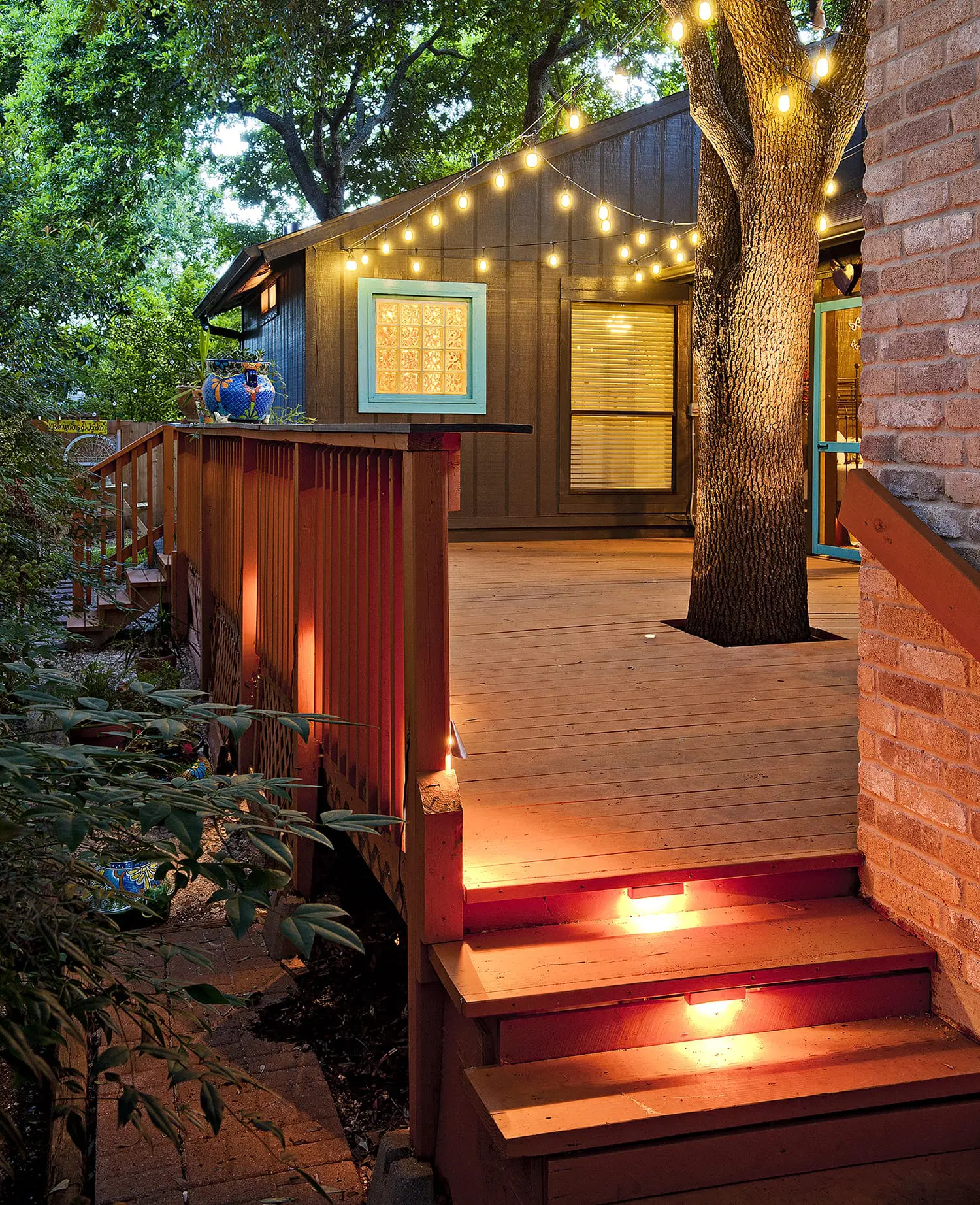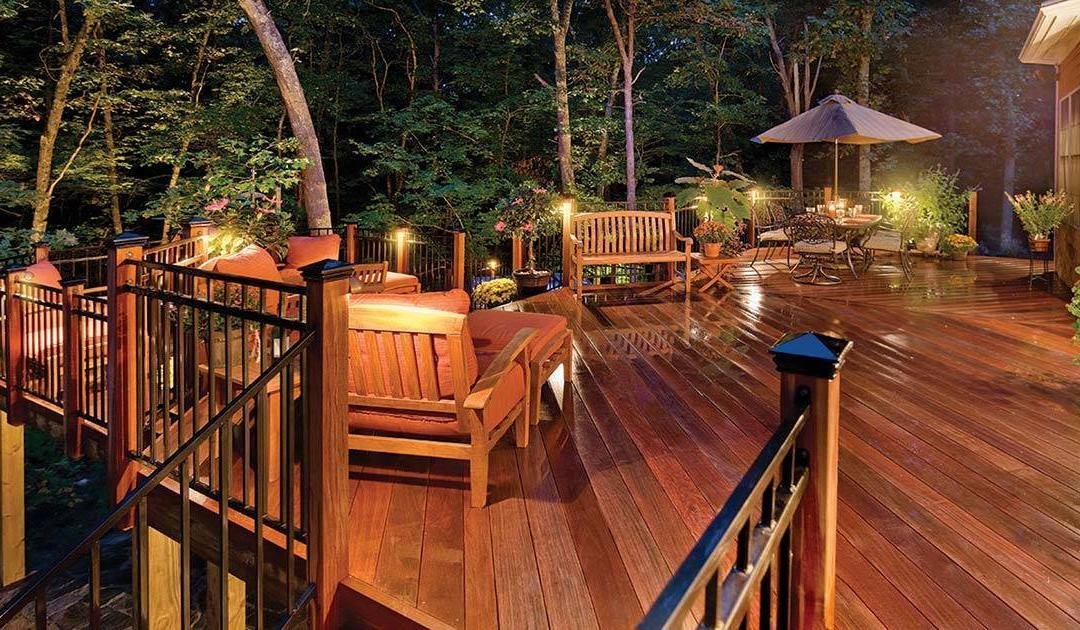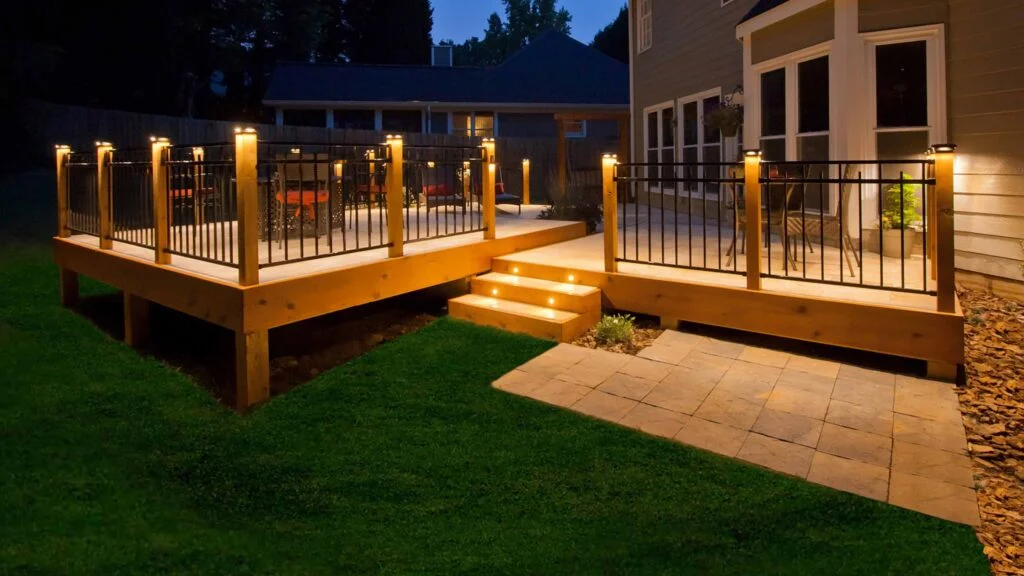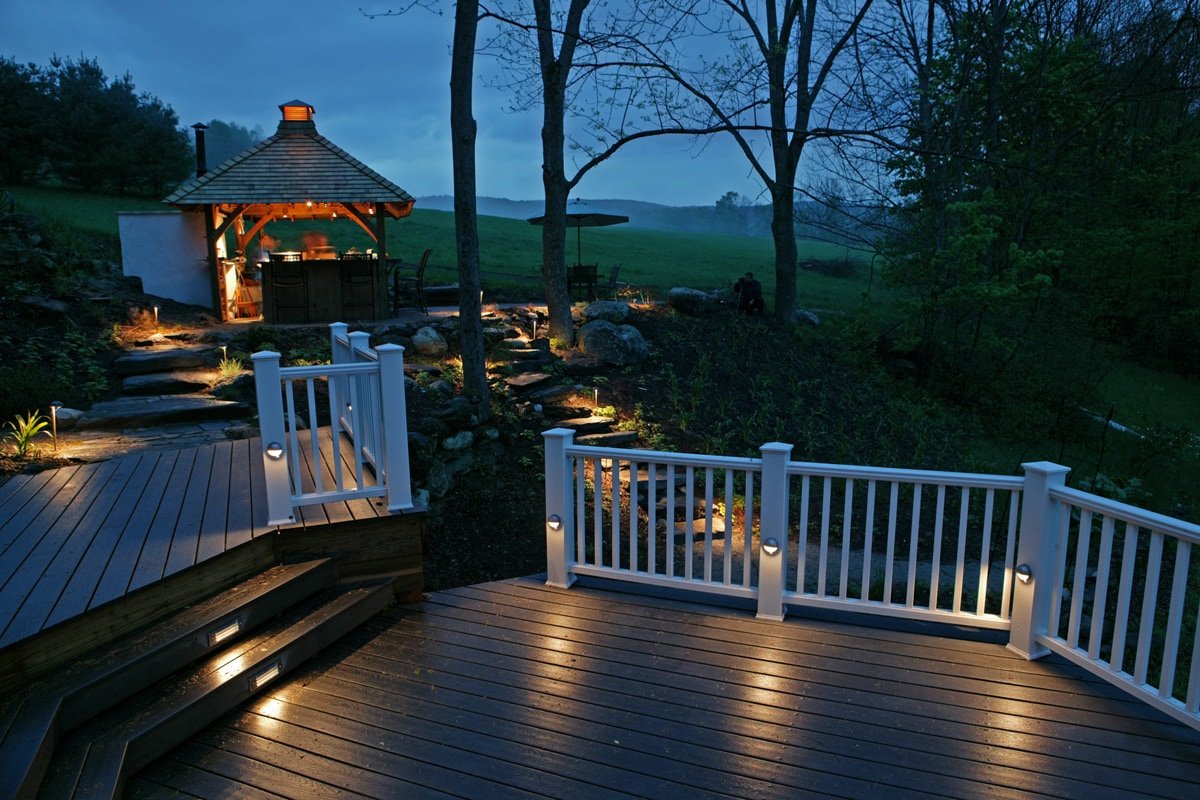
- FREE Shipping on all orders! Limited time!
- support@tru-scapes.com
That magical glow of a perfectly lit deck, transforming it from a simple wooden platform into a true extension of your home, is an upgrade every homeowner dreams of. It’s where you’ll share late-night conversations, host memorable dinners, and unwind after a long week. But before you get to the finished product, there’s one question that stops many people in their tracks: “How much is this actually going to cost?”
A poorly planned budget can quickly turn a dream upgrade into a stressful experience. You deserve a beautiful, safe, and reliable outdoor space without financial surprises. This guide will walk you through everything you need to know to create a realistic budget for your deck lighting project. We’ll break down the key cost factors, explore the DIY vs. professional debate, and give you actionable tips to get the most value for your investment.

Jumping into a home improvement project without a budget is like taking a road trip without a map—you might get somewhere, but it probably won’t be where you intended. For deck lighting, a clear budget is your most important tool.
Ultimately, a well-planned deck lighting project is an investment that boosts your home’s value, safety, and curb appeal. A budget ensures that investment is a smart one.
The final price tag on your project can vary significantly. The total cost is a sum of several key parts, each with its own price range. Understanding these variables is the first step to building an accurate budget.
This is the most straightforward factor. A small, simple 10×12 rectangular deck will require far fewer lights, less wire, and less labor than a large, multi-level deck with built-in benches, multiple staircases, and a pergola.
The lights themselves are where you have the most control over both style and cost. Modern deck lighting is almost exclusively low-voltage LED, which is known for being energy-efficient and long-lasting. However, not all LED fixtures are created equal. The materials, construction, and brand name all play a role in the price.
Here’s a look at common fixture types and their typical cost range:
| Fixture Type | Average Cost per Light | Best Used For |
| Post Cap Lights | $40 – $80+ | Topping railing posts for ambient and perimeter lighting. |
| Recessed Lights | $25 – $50+ | Installing flush into deck boards or stair risers for a sleek, modern look. |
| Stair Riser Lights | $30 – $60+ | Mounting on the vertical face of stairs for critical safety and a dramatic effect. |
| Under-Rail Lights | $25 – $55+ | Hiding discreetly under the handrail to cast a soft glow downward onto the deck surface. |
A Note on Materials: You’ll often see fixtures made from plastic, powder-coated aluminum, or solid brass. While plastic is the cheapest, it can quickly become brittle and discolor from sun exposure. Powder-coated aluminum offers excellent durability and weather resistance for the price. Brass is a premium option that develops a beautiful, natural patina over time and is built to last a lifetime. Investing in better materials means you won’t be replacing fixtures every few years.
Your low-voltage lights can’t plug directly into a standard wall outlet. They require a low-voltage transformer to step down your home’s 120-volt electricity to a safe 12 volts.
The size (and cost) of the transformer you need depends on the total wattage of all your planned lights. A good rule of thumb is to ensure your total wattage is no more than 80% of the transformer’s maximum capacity. This prevents overload and leaves room for potential future additions.
Don’t skimp here. A high-quality, multi-tap transformer gives you more control over brightness levels and ensures consistent power delivery to every light in your system.
This is one of the biggest decisions you’ll make for your deck lighting project budget. Doing it yourself can save you a significant amount on labor, but it’s important to be realistic about the skills, tools, and time required.
| Aspect | DIY Installation | Professional Installation |
| Upfront Cost | Lower (materials only) | Higher (materials + labor) |
| Time | Significant time commitment (1-3 weekends) | Minimal time commitment (typically 1-2 days) |
| Expertise | Requires electrical knowledge, tool proficiency, and design sense. | Experts handle design, layout, and all technical wiring. |
| Tools | Requires specialized tools like wire strippers, drills, and possibly a multimeter. | The installer provides all necessary professional-grade tools. |
| Warranty | You are responsible for any issues; may void fixture warranties if installed improperly. | Workmanship and products are typically warrantied, offering peace of mind. |
| Result | Can be rewarding but risks visible wires, uneven lighting, and safety hazards. | Ensures a clean, integrated look with hidden wires and optimal performance. |
While a DIY approach is tempting, professional installers have the experience to hide wires cleanly, balance light levels perfectly, and ensure your system is safe and compliant with local codes. For many homeowners, the cost of professional installation is well worth the flawless, worry-free result.

Let’s imagine a common scenario: you have a 12×16 foot rectangular deck with one set of 5 stairs. You want a classic, well-lit look focusing on ambiance and safety.
Here’s a possible breakdown:
As you can see, the ranges are broad. Your specific choices in fixture quality and installation method will determine where you fall on this spectrum.
A smart budget isn’t just about spending less; it’s about spending wisely. Here are a few ways to maximize your investment.
Budgeting for your deck lighting project doesn’t have to be intimidating. By breaking it down into its core components—deck size, fixture quality, power, and installation—you can build a clear and realistic financial plan. This thoughtful approach is the first and most important step toward creating a stunning, safe, and durable outdoor space you and your family will enjoy for countless nights to come.
Ready to start bringing your vision to life? Explore our deck lighting shop. If you have questions, our lighting experts are here to help you design the perfect system for your home and budget.
What’s your biggest question about budgeting for deck lighting? Share it in the comments below!

Does your beautiful deck feel like an island once the sun goes down? You’ve created a perfect space for relaxing

That magical glow of a perfectly lit deck, transforming it from a simple wooden platform into a true extension of